Medicaid Enrollment in PA Continues to Rise – But Not as Much as Elsewhere
Medicaid enrollment in Pennsylvania rose 14.7 percent from February 2020 to March 2021.
That’s a lot, but Medicaid enrollment in 36 states examined as part of a recent analysis rose 17.7 percent from February 2020 to March 2021. Leading the way were two Medicaid expansion states, Utah and Nebraska, which saw their Medicaid enrollment increase 37.6 percent and 30.9 percent, respectively.
 Other states with major increases in Medicaid enrollment were Missouri (26.5 percent), Illinois (26.3 percent), and Indiana (25.7 percent). The increases appear to have been driven by pandemic-related job losses and the accompanying economic downturn.
Other states with major increases in Medicaid enrollment were Missouri (26.5 percent), Illinois (26.3 percent), and Indiana (25.7 percent). The increases appear to have been driven by pandemic-related job losses and the accompanying economic downturn.
Learn more about where and why Medicaid enrollment is rising and where Pennsylvania fits among them from the article “What is Happening With Medicaid Enrollment in Q1 of 2021?” on the web site of the Georgetown University Health Policy Institute.
 Beginning today, SNAP is expanding its regular COVID-19 updates to encompass a broader scope of Pennsylvania state health policy endeavors. As efforts to address COVID-19 prove more effective and the state moves from focusing almost exclusively on the public health emergency back to its usual, much broader array of health policy concerns, we hope this update will be a useful resource on matters of importance to the hospital community. Please feel free to share this newsletter with others in your organization or to send us the email addresses of those you think might be interested and we will send it directly to them.
Beginning today, SNAP is expanding its regular COVID-19 updates to encompass a broader scope of Pennsylvania state health policy endeavors. As efforts to address COVID-19 prove more effective and the state moves from focusing almost exclusively on the public health emergency back to its usual, much broader array of health policy concerns, we hope this update will be a useful resource on matters of importance to the hospital community. Please feel free to share this newsletter with others in your organization or to send us the email addresses of those you think might be interested and we will send it directly to them. In the Legislature
In the Legislature COVID-19: By the Numbers
COVID-19: By the Numbers Pennsylvania Health Care Cost Containment Council
Pennsylvania Health Care Cost Containment Council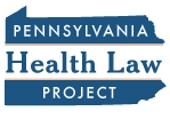 Included in this month’s edition are articles about:
Included in this month’s edition are articles about: As a result, Pennsylvania has added nearly 400,000 people to its Medicaid rolls in the past year. Today, 3.2 million Pennsylvanians are enrolled in the state’s program, although among them are approximately 250,000 who would have been dropped from the program except for a federal requirement that the state not drop people from the program in exchange for a major increase in federal aid for the state’s program.
As a result, Pennsylvania has added nearly 400,000 people to its Medicaid rolls in the past year. Today, 3.2 million Pennsylvanians are enrolled in the state’s program, although among them are approximately 250,000 who would have been dropped from the program except for a federal requirement that the state not drop people from the program in exchange for a major increase in federal aid for the state’s program. According to the study,
According to the study, Governor Wolf
Governor Wolf During her daily briefing today, Secretary Levine reported that the number of new COVID-19 cases in Pennsylvania yesterday declined slightly from the day before, although she dismissed this decline as “not statistically significant.” There are now COVID-19 cases in 50 of Pennsylvania’s 67 counties. While the number of hospitalizations, ICU cases, and patients put on ventilators remain low, she said those numbers remain in line with trends elsewhere in the country and her department’s own projections.
During her daily briefing today, Secretary Levine reported that the number of new COVID-19 cases in Pennsylvania yesterday declined slightly from the day before, although she dismissed this decline as “not statistically significant.” There are now COVID-19 cases in 50 of Pennsylvania’s 67 counties. While the number of hospitalizations, ICU cases, and patients put on ventilators remain low, she said those numbers remain in line with trends elsewhere in the country and her department’s own projections. The Department of Health and Human Services has provided guidance to states asking them to take immediate action to
The Department of Health and Human Services has provided guidance to states asking them to take immediate action to 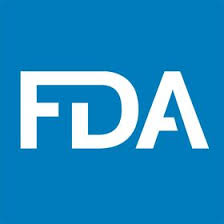 The FDA established
The FDA established  The Department of Drug and Alcohol Programs (DDAP) has issued a document clarifying the state’s response to federal guidance on the disclosure of patients’ substance abuse disorder records during the telehealth process. See that policy clarification
The Department of Drug and Alcohol Programs (DDAP) has issued a document clarifying the state’s response to federal guidance on the disclosure of patients’ substance abuse disorder records during the telehealth process. See that policy clarification  The legislature continues to deliberate on a number of measures to respond to the COVID-19 crisis. Among the issues being discussed between the administration and legislature are:
The legislature continues to deliberate on a number of measures to respond to the COVID-19 crisis. Among the issues being discussed between the administration and legislature are: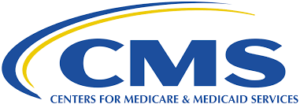 CMS issued an FAQ explaining requirements for and distribution of the 6.2% enhanced FMAP stipulated in the Families First Coronavirus Response Act. States should expect to see their first payments no later than tomorrow. The document explains that the enhanced FMAP doesn’t apply to expansion population, though it does apply to DSH. It will flow through to the CHIP enhanced FMAP calculation but not in equal percentage point values for all states and the 100% cap on matching remains in effect. States will not need to submit a state plan amendment in order to receive the funding. The complete guidance document is available
CMS issued an FAQ explaining requirements for and distribution of the 6.2% enhanced FMAP stipulated in the Families First Coronavirus Response Act. States should expect to see their first payments no later than tomorrow. The document explains that the enhanced FMAP doesn’t apply to expansion population, though it does apply to DSH. It will flow through to the CHIP enhanced FMAP calculation but not in equal percentage point values for all states and the 100% cap on matching remains in effect. States will not need to submit a state plan amendment in order to receive the funding. The complete guidance document is available 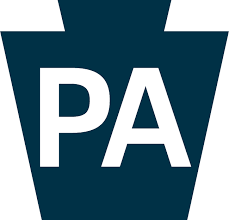 Since yesterday, the Department of Human Services has issued the following four new guidance documents:
Since yesterday, the Department of Human Services has issued the following four new guidance documents: Federal
Federal 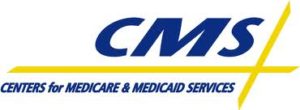 CMS Catastrophic Plan Coverage Guidance
CMS Catastrophic Plan Coverage Guidance